Content writing, whether for your own website or your clients if you’re a freelancer, can be an incredibly rewarding job. But there are things you should do as a content writer. And many things you should not do as well if you want to be successful.
In this guide, I’ll go through 10 content writing dos and 10 content writing don’ts to help you become a better writer.
10 Content Writing Dos
Here’s what you SHOULD do as a content writer:
1. Do Research Your Topic Thoroughly
The first tip here is also the first part of any content writing job. You need to spend time researching the topic to ensure that your content is accurate and up to date. This applies whether it’s content for your own site or for a client.
Proper research also allows you to see what your competitors are writing about (if it’s for your own blog for example), or what your clients’ competitors are writing about. This will give you an idea of what you need to include if you want to outrank them in the search results!
The best place to start is the search engine results page (SERP) for the target keyword/topic of the post. Go through the articles to understand the topics they cover. And look at the SERP features, like the “People also ask” box:
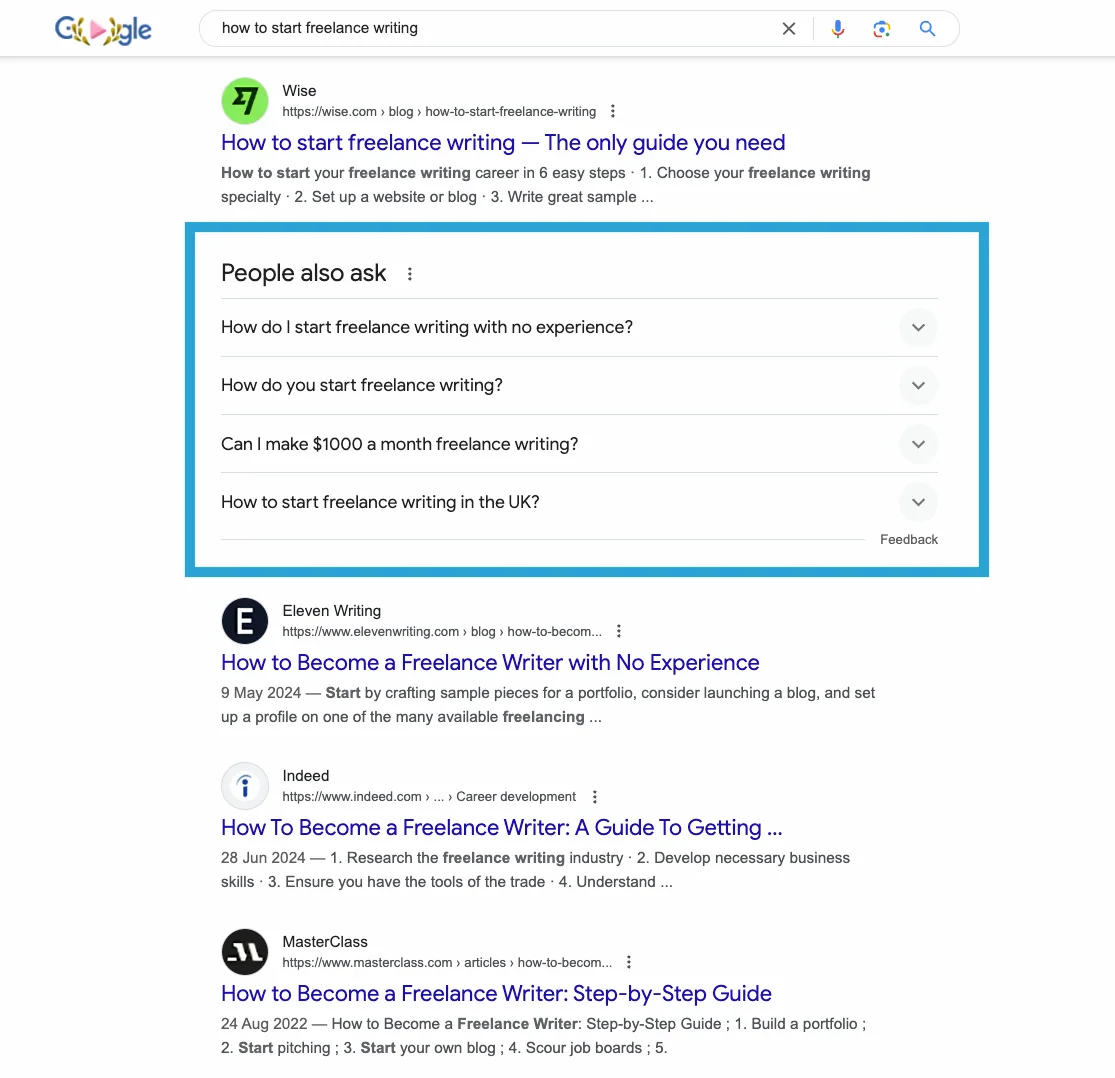
And the related searches:
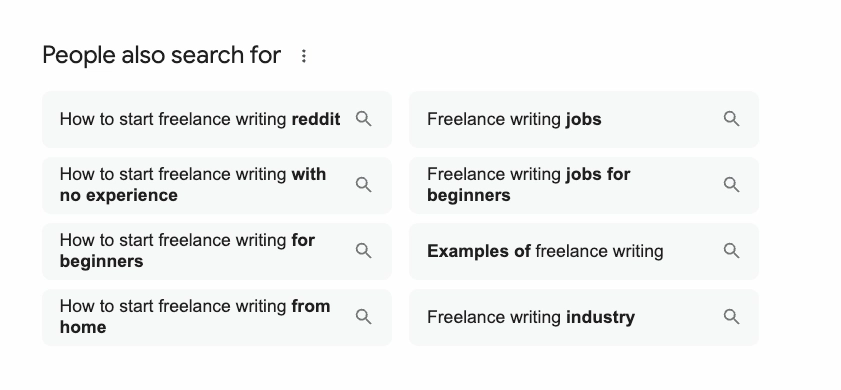
This can help you get a wider understanding of related topics you may want to cover in your content.
2. Do Use Clear Headings & Subheadings
Headings are important for content writing because they help readers quickly navigate through the text and make it easier to read. They also help Google and other search engines understand what the content is about.
Like how HubSpot uses them to make their content easier to read:
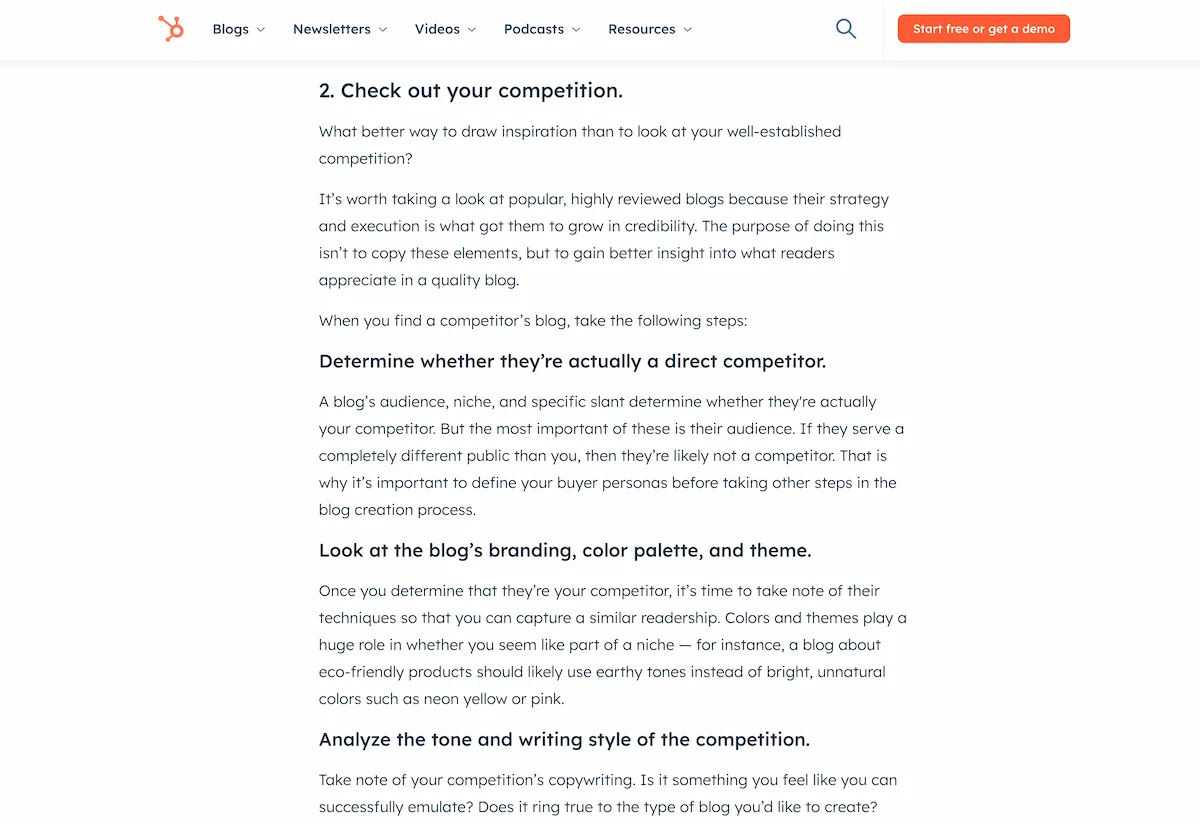
Try to keep them fairly short, usually around 60 characters or less (including spaces). This makes the headings themselves much easier to skim and digest.
3. Do Use Keywords Throughout Your Content
Keywords are important for content writing because they can help you rank higher in search pages. Make sure you use relevant keywords throughout your content to ensure that it is search engine friendly.
Don’t go overboard and keyword stuff, and instead just include them naturally. If it’s jarring to read it with the keyword included in the sentence, remove it!
If it’s your own content, you’ll need to perform keyword research. But clients will often provide these keywords for you. And they may have specific guidelines to follow, so make sure you adhere to them!
4. Do Keep Sentences & Paragraphs Short
Short, concise sentences are easier to read than long, complex ones. So, make sure you keep them as brief as possible, without making the text seem robotic. The same applies for paragraphs—keep them to a maximum of three or four sentences in length in most cases.
Why is this important?
Well, consider whether you would rather read this:

Or this:
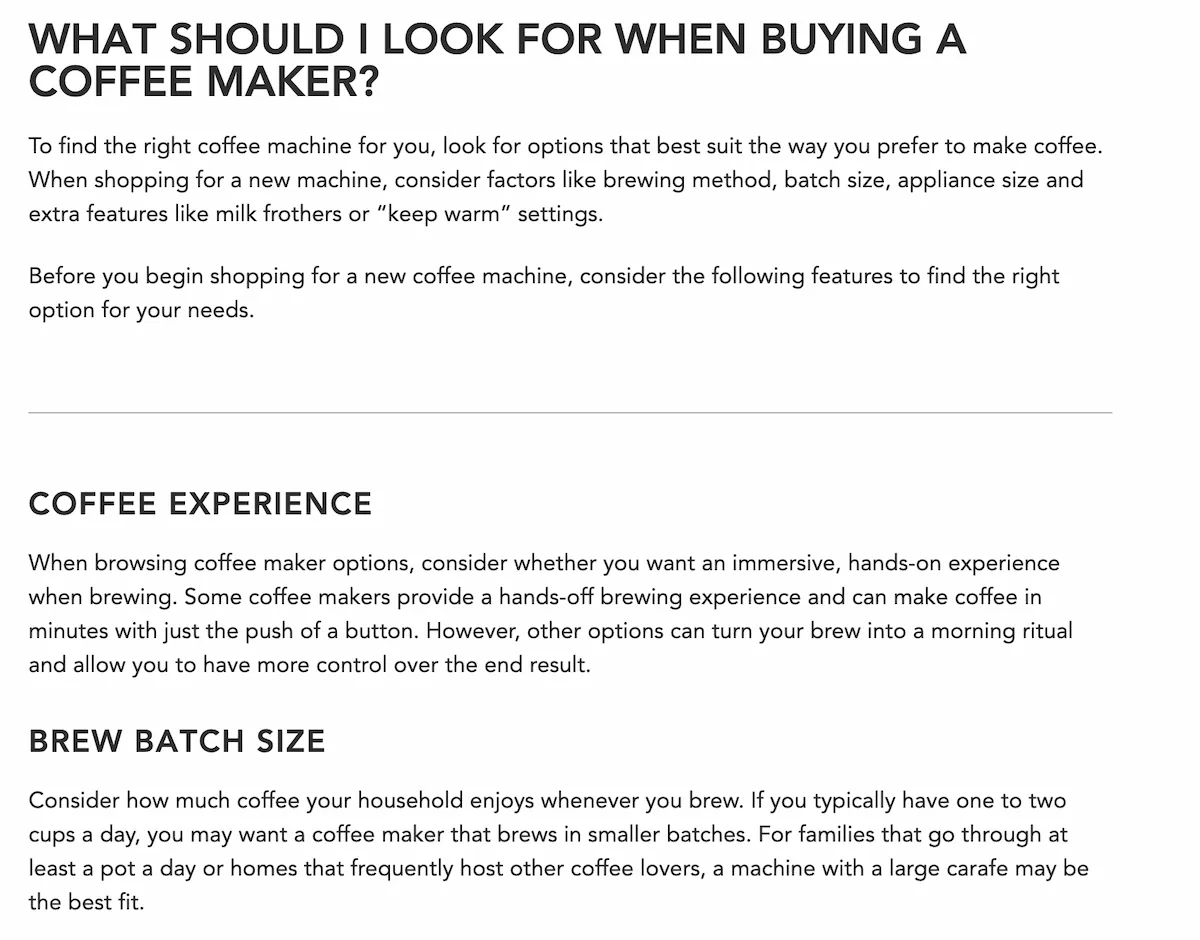
There are no hard limits for either sentences or paragraphs. So don’t get too caught up counting words!
And if you’re a freelance writer creating content for clients, make sure you stick to their style guidelines.
5. Do Use Active Voice
Active voice helps make your content sound more engaging and dynamic. So try to use it whenever possible. This is a tricky concept for many to learn. I also found it hard when I first started, and some passive voice still slips through the cracks here and there!
You don’t need to remove every single instance of passive voice (sometimes it just makes sense to leave it in). However, you can use a tool like this to see where you have a lot of passive voice.
Here are two examples to illustrate how to change passive voice to active voice:
The play was written by John > John wrote the playThe apple was picked by the farmer > The farmer picked the appleThese are very basic examples, but hopefully they give you a rough idea of what passive and active voice look like.
A quick way to check for passive voice is to see if there are instances of ‘by’ in your content, like in the above examples. If there are, swap the words around to make it active voice.
6. Do Include Visual Media
Images and videos can help your content stand out from the crowd and make it easier for readers to consume. However, they can also slow down website page speed (which is important for your own website or your client’s) and take away from the text if you use them too much/in the wrong places.
It’s best to ask yourself whether the media you’re considering adding to the post actually adds value for the reader. Or if you’re just using it to break up the text (as headings and bullet lists can serve as useful visual breaks instead).
7. Do Proofread Your Content Before Submitting
Accuracy and clarity are key components of high-quality content writing. Take the time to proofread content before submitting it, and get comfortable editing content yourself (as this will in turn improve your writing as well).
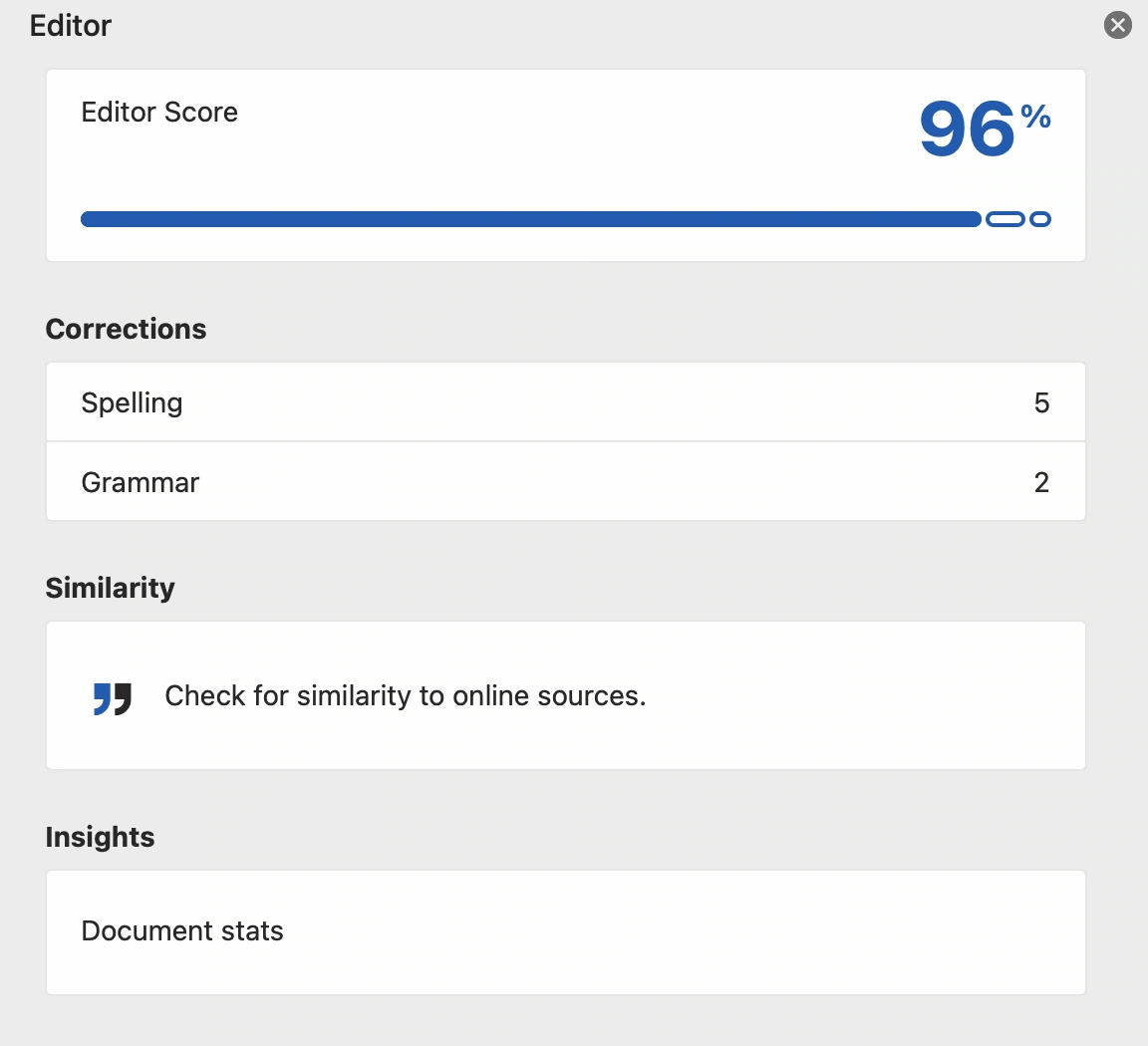
You can use tools for this if you want, including those built into programs like Word and Google Docs. But it really does pay dividends to be able to spot and fix errors yourself. Plus, tools often miss things!
8. Do Link To External Sources
Linking to external sources is a great way to increase the credibility of your content and help readers find additional information. Only do it where relevant, and avoid linking to too many/irrelevant external pages as this will also lead people away from your content. Which isn’t what you want unless it’s truly helping them.
Only do it where it adds value for the reader (that’s becoming a theme here!).
9. Do Write In An Engaging Tone
You should write your content in an engaging tone that encourages people to keep reading. Think about your target audience and what kind of content will best engage them.
If you’re writing for an audience that primarily wants to learn how to do things, they might not engage much with listicles of different products.
But if your audience is looking for specific products, long informational posts that don’t tell them what to buy are probably not the pieces of content you should write!
A quick look at the search results for the target keyword/topic can tell you what kind of content might work best. Like this SERP, which suggests people want a roundup of tools:
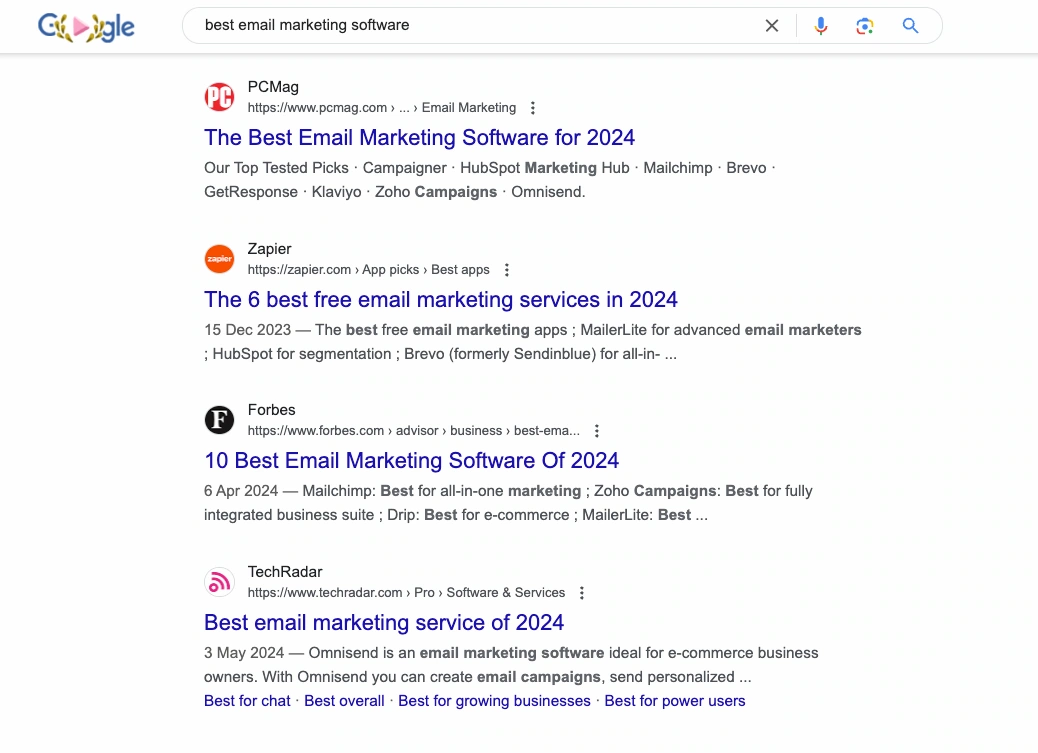
Compared to this SERP, which suggests in-depth guides are the way to go:

10. Do Use Simple Language Where Possible
Simple language makes content easier to understand. So avoid long and complicated words whenever possible.
There are cases where you need to use words specific to your niche or technical jargon. In these cases, be sure to explain it further (briefly) to ensure all of your readers know what you’re talking about. Or use tip number 8 and link to a reputable source that explains it!
10 Content Writing Don’ts
Here’s what you SHOULDN’T do as a content writer:
1. Don’t Submit Content Without Checking It
Content with typos or grammatical mistakes can damage the credibility of your work. Make sure you proofread and check your content for errors before submitting it.
Not only will errors damage your own credibility if the content is written under your name. But it could also harm your client’s reputation or your relationship with them if the content is going elsewhere.
There is no substitute for checking things yourself!
2. Don’t Plagiarize
Plagiarism is a no-go, end of story. Always cite sources where you’re using data that isn’t yours or when you’re using other people’s content without adding your own value or take on it (and even then, it’s typically best to cite the original source).
There are lots of plagiarism checkers out there that will help you with this, and I recommend picking at least two (as one might pick up on something the other missed).
I personally use Copyscape:
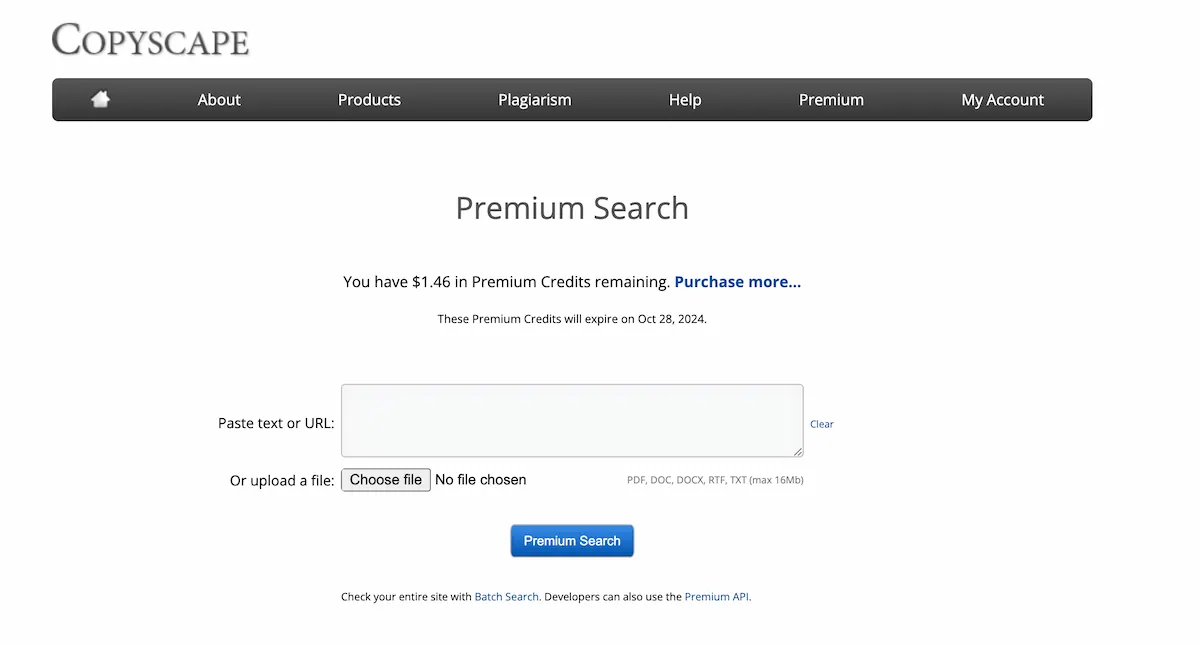
Along with the Semrush AI & Plagiarism Checker (because I have a subscription that gives me access to this):
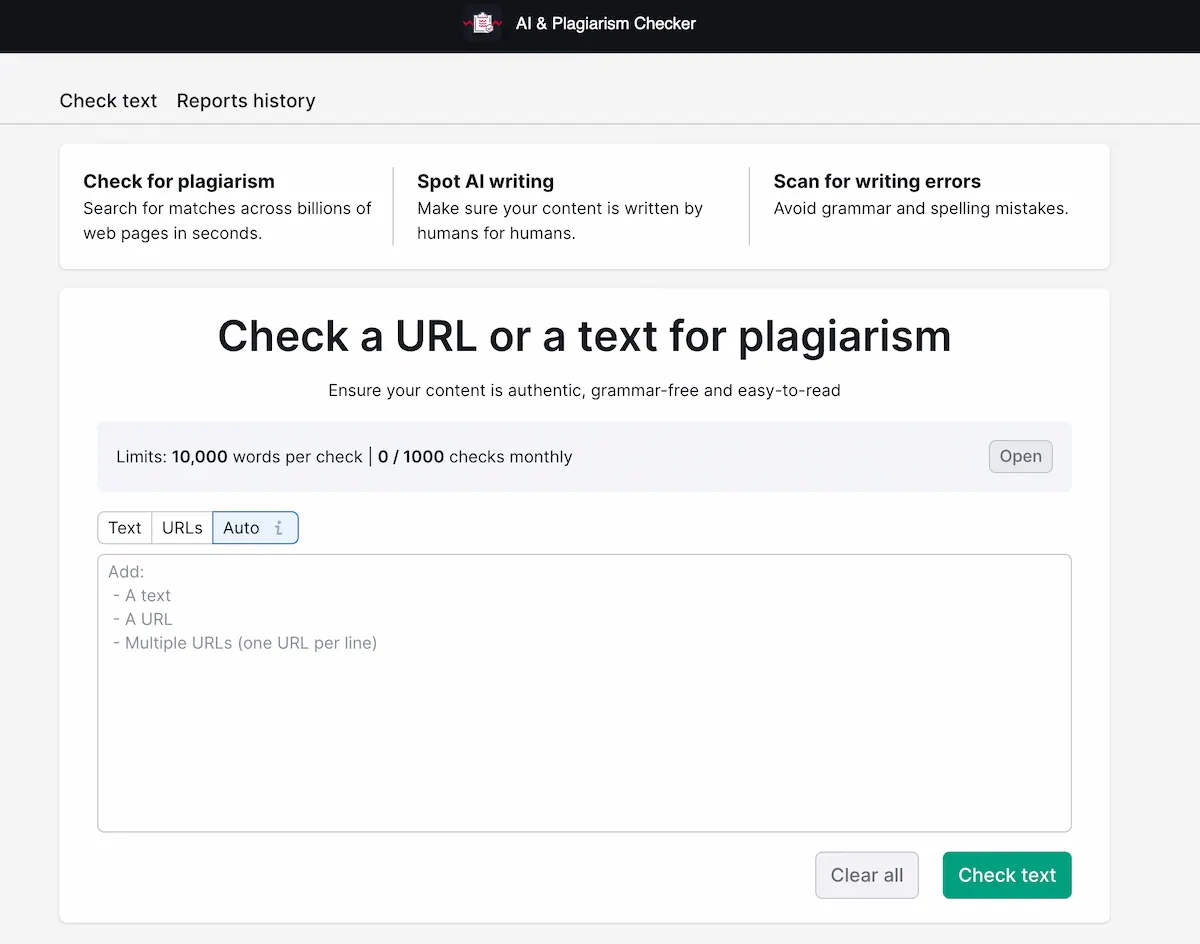
But there are lots of free options out there. Although often with quite restrictive word limits.
3. Don’t Write Content That’s Too Long Or Too Short
The ideal length of a piece of content will depend on the topic and the platform you’re writing for. If you’re writing content for your own website, you can usually gauge the ideal length by seeing what other people write (although this is not a fool-proof method).
If you see that Google is ranking articles around the 2000-4000 word range, it’s probably not a bad idea to fall into that range as well. But if you wrote 4000 words and felt you hadn’t covered everything a reader needs to know, you have two options:
- Go beyond that word count (sometimes it is the right thing to do!)
- Create a few separate pieces of content
Of course, if you’re writing for clients, they’ll typically give you guidance on their preferred length. And you won’t always have control over whether it should be one or more articles.
4. Don’t Forget To Include A Call To Action
Calls to action (CTAs) are an important part of content writing as they encourage readers to take action after reading your content. They might be in the form of a buy button for a product, an email signup form, or even just a link to a related article.
Like this “See it at Amazon” button on an article about the best PS5 controllers:
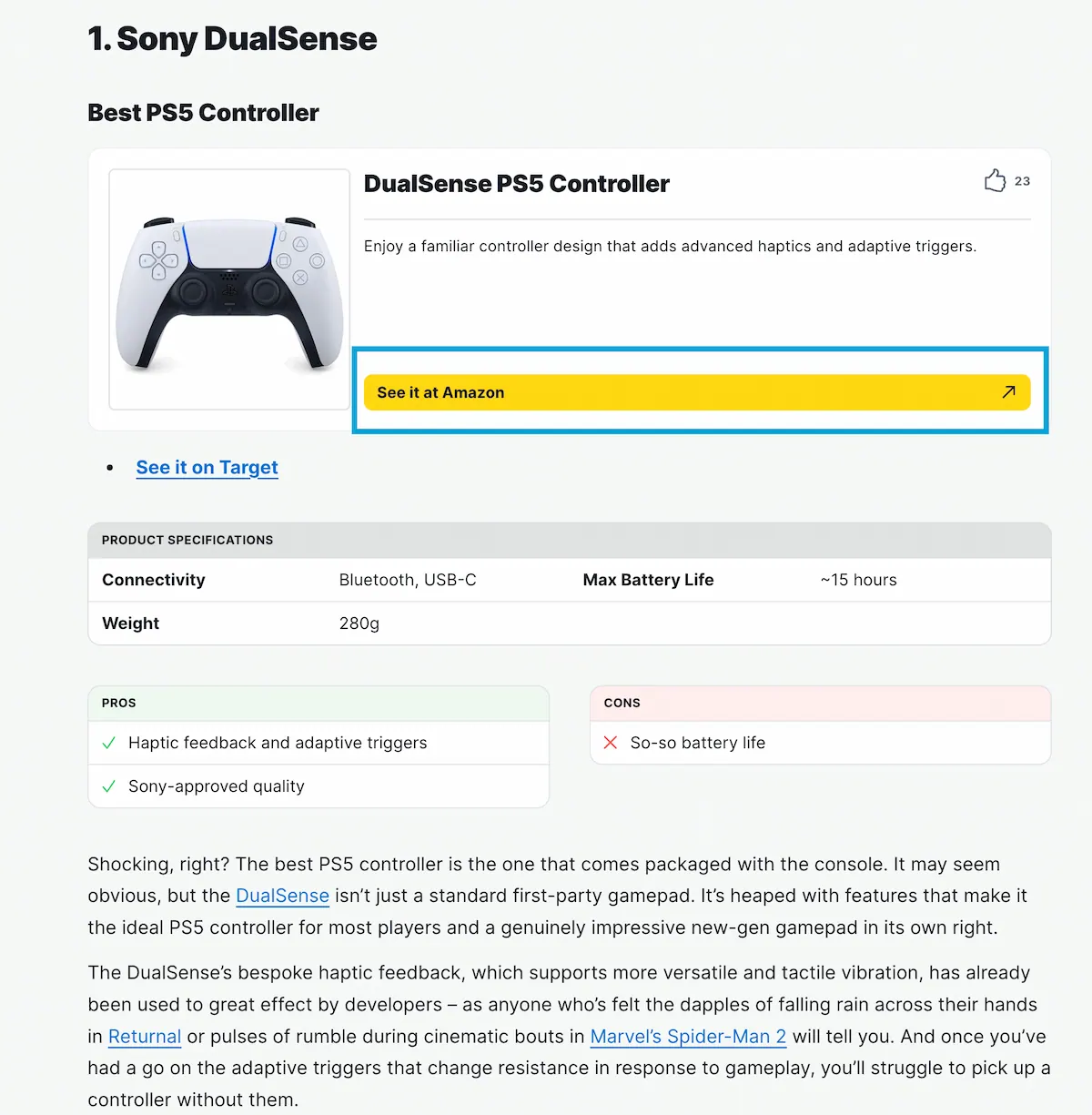
Or this further reading link on a Backlinko blog post about SEO:

Ideally your content will always have some sort of CTA to either convert the reader into a customer (usually important for client work). Or to keep them reading your content (such as linking out to another article on your site).
5. Don’t Skimp On Research Time
I mentioned research earlier, but you really cannot skimp on the time spent doing it.
No matter what you’re writing about, it can usually be improved with a little extra research. This might be to learn more about the topic itself, or simply to find some useful facts or data to present to the reader.
If you’re not familiar with the topic (which is often the case if you’re a freelance content writer taking on various clients), then clearly proper research is an absolute must!
6. Don’t Include Content That’s Irrelevant
Irrelevant content can confuse readers and detract from the quality of your content, so make sure you stay on track. Don’t add content for the sake of increasing the word count—focus on adding value!
The term ‘fluff’ is often used in the content writing world. Anything that doesn’t add value for your reader is fluff, and clients will typically send work back to you if it has too much of it.
7. Don’t Overuse Keywords
Including too many keywords can lead to keyword stuffing. Which can hurt your content’s rankings in search results and put your readers off too. (It’s against Google’s spam policies.)
Here’s an example of keyword stuffing:
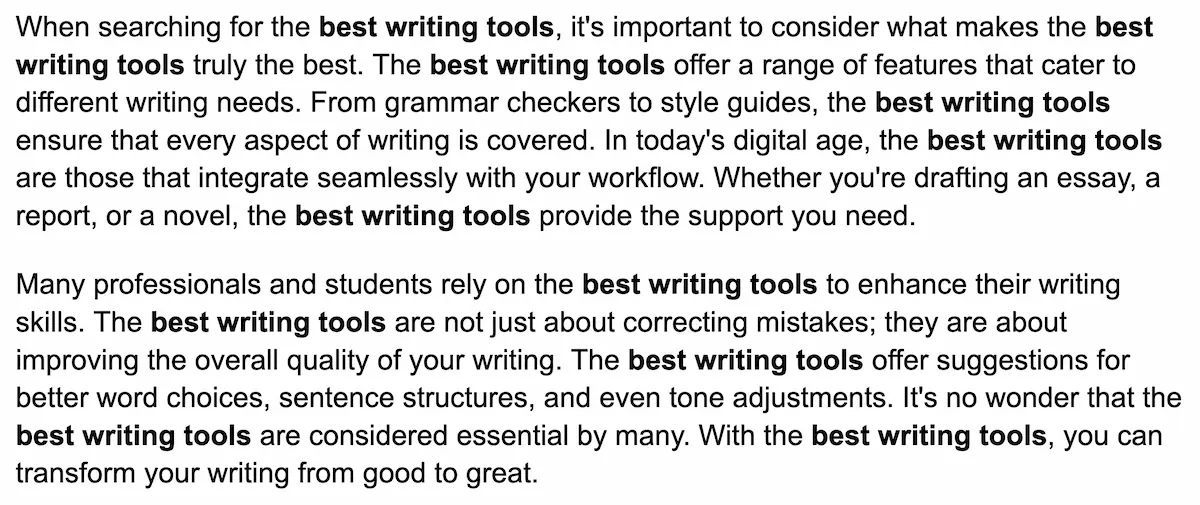
There’s no hard limit to abide by here, but the general rule is to not include keywords unless you can do so in a natural way.
8. Don’t Use A Monotonous Writing Style
Your writing should be interesting and engaging. If it’s too monotonous, readers will quickly lose interest. Obviously the specific style you should use largely depends on your target audience and niche. But keeping things conversational is usually a good choice for most cases.
Again, stick to your client’s guidelines if they deviate from this general advice.
9. Don’t Just Write For Search Engines
You should write your content with humans as the primary audience, not search engines. Here are Google’s own words on the topic:
“Google’s automated ranking systems are designed to present helpful, reliable information that’s primarily created to benefit people, not to gain search engine rankings, in the top Search results.”
Search engine optimization (SEO) is important, but you need to provide value for your readers, or nobody will want to come to your website! This also applies if you’re writing content for clients too.
10. Don’t Stop Learning
Finally, never stop learning as a content writer! There are always ways to improve your content, and you can always get better. You don’t need to be taking 15 courses a week to improve, but being open to learning will help you become a better content writer!
I am constantly picking up new tricks and techniques. And it’s part of what makes the role of a content writer so enjoyable!
Plus, you’ll need to be adaptable. As your clients will all have different style guides, and you’ll often find yourself writing for different audiences. So the ability to learn on the job is essential.
Is Content Writing Right For You?
Content writing can be a great way to earn money as a freelancer. Or to create your own content on a personal website. But you need to know the dos and don’ts if you want to write valuable content consistently!
For more guidance, check out our article on beginner content writing tips.
Freelance Ready is reader-supported. That means some links on this website are affiliate links. If you sign up or make a purchase through these links, we may earn a commission.

